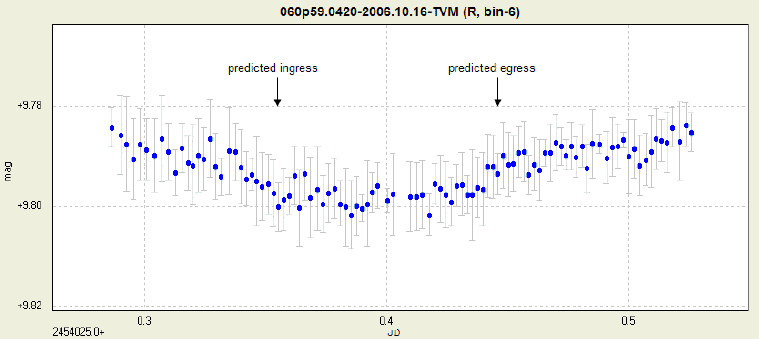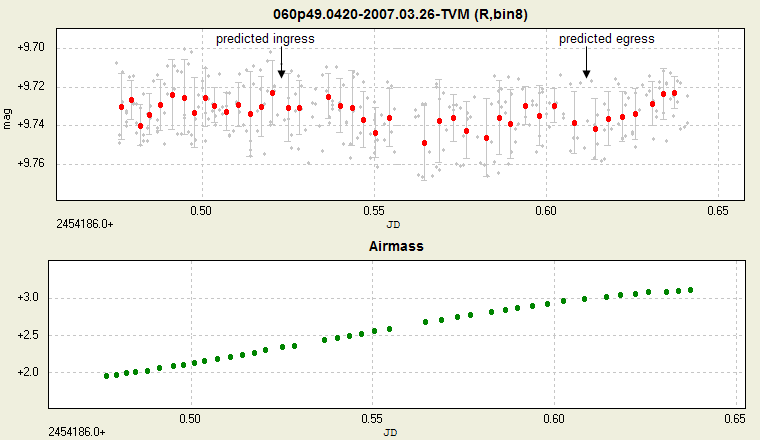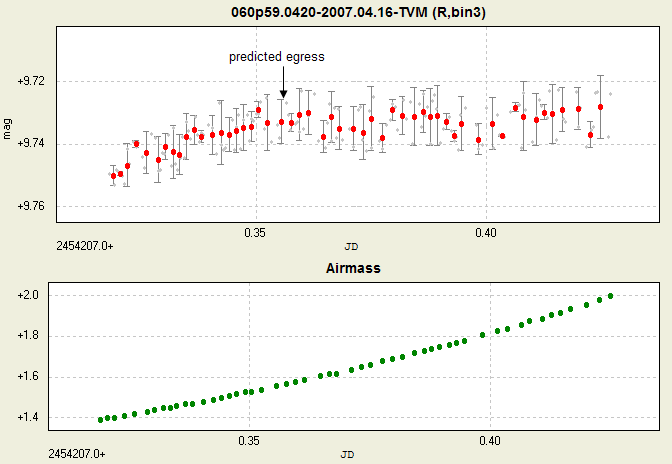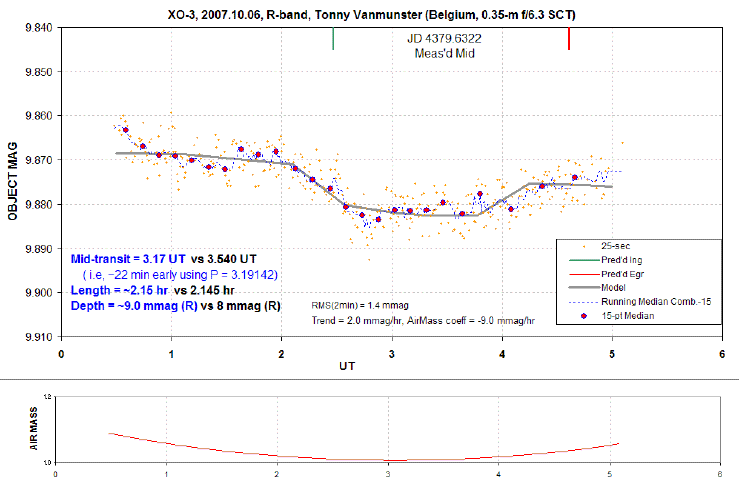Co-discovery
of the transiting exoplanet XO-3b
In May 2006, the XO consortium announced its first
discovery of a transiting exoplanet, named XO-1b.
The discovery attracted a lot of attention, a/o due
to the important role played by 4 amateur
astronomers - including myself - in the months
preceding the discovery announcement. The full story
is here. The
XO Project begins its search with a telescope
located on Haleakala summit operated by the
Institute for Astronomy of the University of Hawaii.
The telescope is created from two commercially
available 200-millimeter telephoto camera lenses.
Using the Haleakala telescope, XO's professional
team first identifies candidate stars that dim ever
so slightly from time to time. XO's amateur
astronomers (the "XO Extended Team")
observe these candidates over time and look for
further evidence that the dimming is due to a
transiting planet. Once enough evidence is in place,
the professional team uses large telescopes -- the
2.7-meter Harlan J. Smith Telescope and the 11-meter
Hobby-Ebberly Telescope, both at the University of
Texas McDonald Observatory in West Texas -- to
confirm the presence of a transiting planet.
Early May 2007,
the second discovery by XO was announced : XO-2b.
Merely a few weeks later, we already announced our
third discovery : XO-3b. Again, the XO Extended Team
had been monitoring
the object intensively in the months before the
discovery was made public. At that time, the
object was given the codename 060p59.0420,
and below are some of my observations of this object,
going back to October 2006 !




Unfiltered observations of
XO-3,
obtained at CBA Belgium Observatory between October
2006 and October 2007,
using a 0.35-m f/6.3 telescope and ST-7XME CCD
camera.
Error bars depict the standard
deviation.
XO-3b properties
XO-3b's host is a 10-th mag F dwarf star at R.A.
= 04h21m53s and Decl.= +57°49.0' (J2000.0). The
exoplanet itself is more than 12 times as massive as
Jupiter and orbits its host star once every 3.2
days, in a tight, elongated orbit. XO-3b is by far
the most massive "hot Jupiter" found so
far, and on the borderline of being a brown dwarf.
It's the largest and most massive planet yet found
in such a close orbit, and given the proximity of
the orbit to the star, it's a surprise to find that
the orbit is not circular but significantly
elliptical. The debate on the classification of
XO-3b is ongoing at the moment of this writing (June
2007).